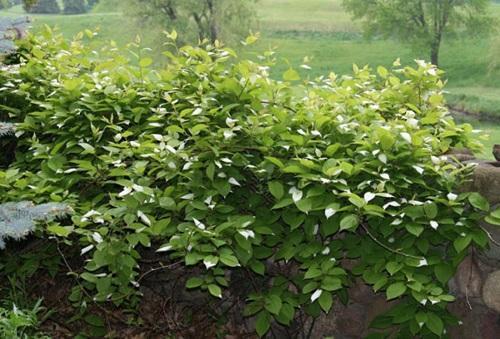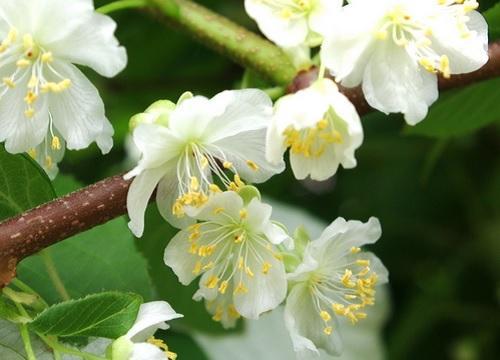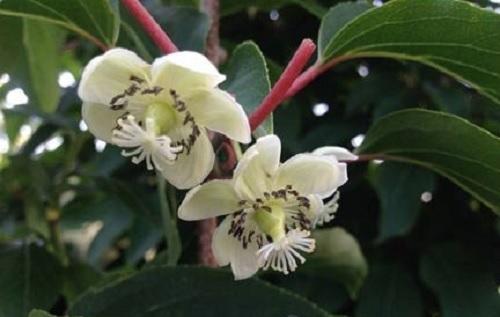Actinidia: boy or girl?
 Actinidia is not often found on the site, but those who have tried its small, but tasty fruits at least once, grow a liana with pleasure. In care, it is absolutely unpretentious, endures unfavorable weather conditions, practically does not get sick and is not damaged by pests. In addition, it has a beautiful decorative appearance and looks great on an arch or a gazebo.
Actinidia is not often found on the site, but those who have tried its small, but tasty fruits at least once, grow a liana with pleasure. In care, it is absolutely unpretentious, endures unfavorable weather conditions, practically does not get sick and is not damaged by pests. In addition, it has a beautiful decorative appearance and looks great on an arch or a gazebo.
However, novice gardeners often face such a problem that after flowering, the inflorescences simply crumble, leaving no ovary on the bush. The reason for this behavior of actinidia and the absence of fruits is that the plant belongs only to the female or male sex.
Fruiting in actinidia occurs after the third year of planting and only if plants of both sexes are available, while at least 4 female plants are needed for 1 male plant.
What is the difference between actinidia boy and girl?
To distinguish young actinidia the male plant from the female is rather difficult. One of the most reliable ways is to wait until summer, when the liana blooms, and carefully examine the flowers:
- In a male plant, they grow in a bundle, 3 inflorescences each, while in the center of the flower there are a lot of long stamens with black tips, but there is no ovary. After flowering, most of the inflorescences fall off.

- The female actinidia forms one inflorescence, in the center of which a light green ovary is visible. The short stamens are located not in a bunch, but in two rows along the diameter of the flower - at the base of the ovary, stamens with black tips, and at the very top of the ovary, white.

Some actinidia varieties can be distinguished by the color of the leaves. Girls are always green, and boys have white leaves on the tips in June and turn red in September.
What if the plant is unisexual?
The male plant does not have an ovary, and the female plant has sterile stamens - a vicious circle is obtained that does not allow actinidia to bear fruit. In order to get a crop from a vine, it is necessary to establish which gender it belongs to and in the spring to plant a plant of the opposite sex on the bush. You can also plant a new shrub of the opposite sex next to it.